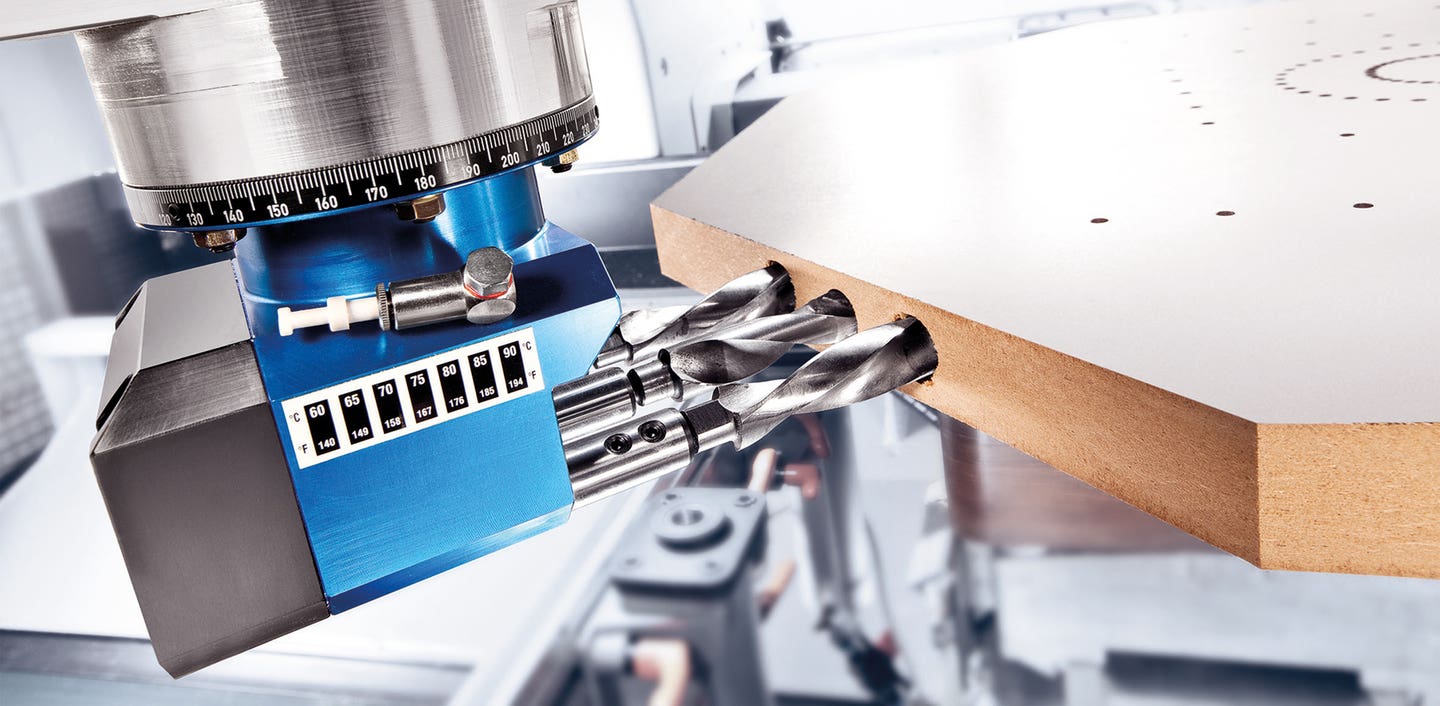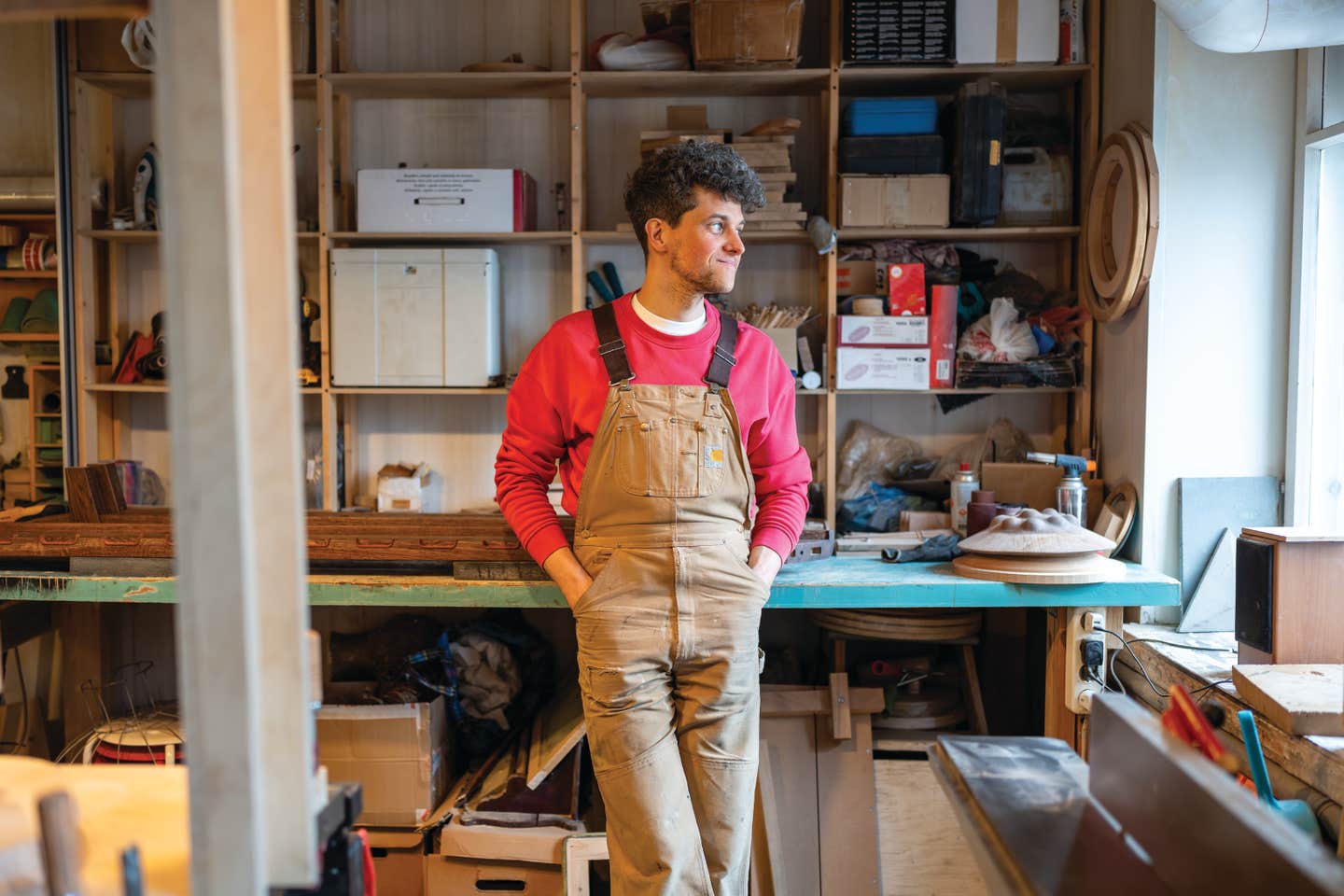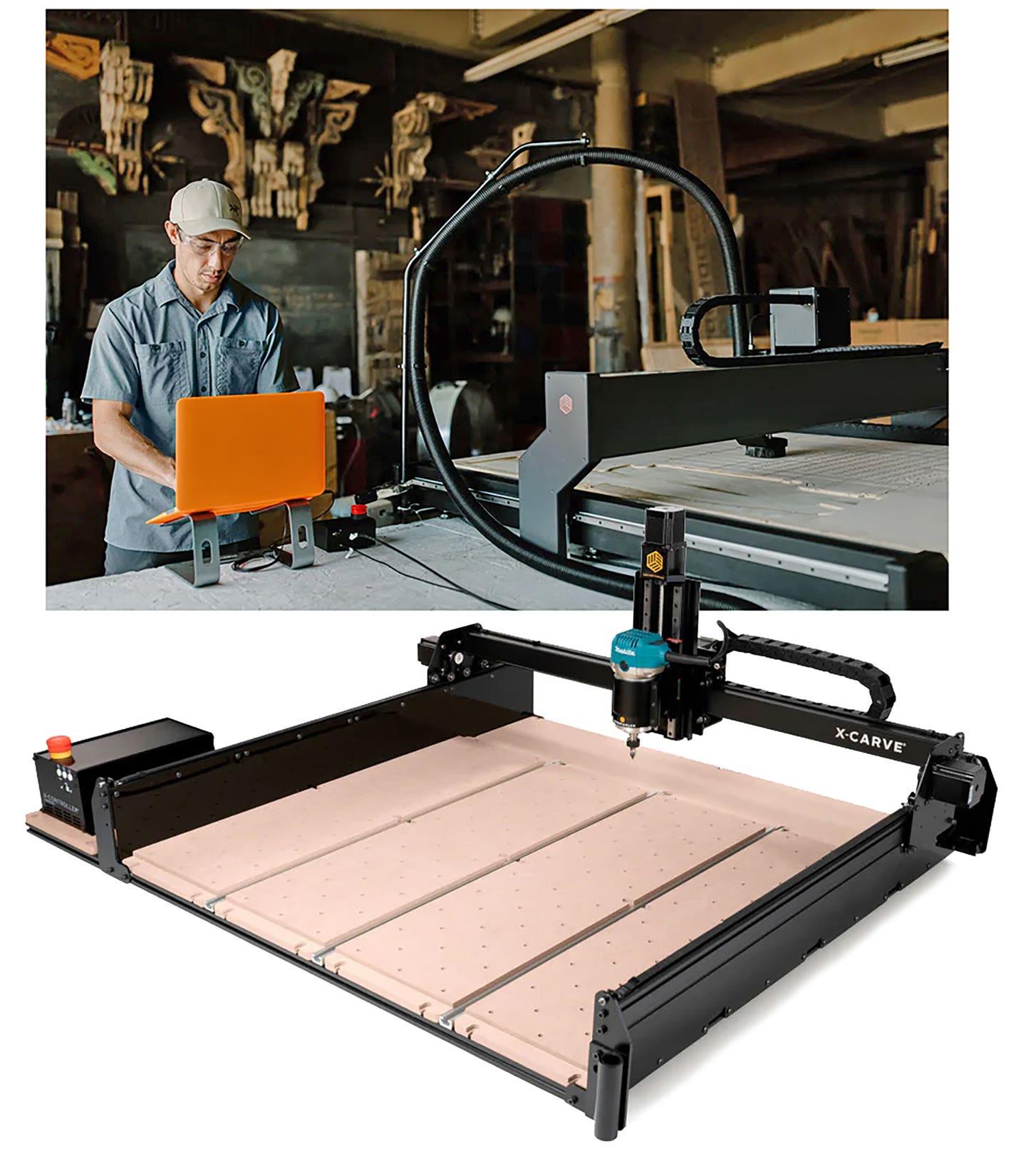Hitchcock is born again
Even though the doors closed twice on the Hitchcock Chair Co. in its nearly two centuries of operation, new owners Rick Swenson and Gary Hath are excited about its future….
Even though the doors closed twice on the Hitchcock Chair Co. in its nearly two centuries of operation, new owners Rick Swenson and Gary Hath are excited about its future. Following their purchase of the company name, which had remained dormant since its second closing in 2006, the owners hosted a grand-reopening celebration last fall and received a wealth of publicity from the company’s revival.
They are now somewhat overwhelmed by orders from customers wanting restoration services on existing Hitchcock pieces, as well as requests for new ones, and are busy building up a new inventory.
“We’re currently gauging what we’re tooled up to do and what consumer demands are. We’re building four chairs now out of 150 possible chairs and we’re starting to feel out the market as to what we should build next. Some chairs are really good sellers and others aren’t,” says Swenson.
The start of a legacy
The birth and growth of the Hitchcock Chair Co. is a dramatic story in itself and it is detailed in a number of books and periodicals by authors either personally involved with the business or intrigued by its impact on early American industrialization. In short, furniture maker Lambert Hitchcock, after apprenticing in Litchfield, Conn., under cabinetmaker Silas Cheney in the early 1800s, created the largest high-end furniture empire of his time.
“[Hitchcock’s] claim to fame and what made him famous was he watched what some of the famous clockmakers were doing, which was using interchangeable parts and mass producing to bring the price down for the common folk,” Swenson says. “That was really the beginning of the Industrial Revolution in Connecticut. So he thought, ‘Why can’t we do that with chairs?’ Chairs were very expensive, so he had the idea of making chairs with interchangeable parts.”
Starting in 1818, Hitchcock worked out of a small shop in Riverton for about six years, then hired employees to start with the mass production of Sheraton-style furniture. He initially focused on unassembled chair kits.
In 1826, Hitchcock built a three-story factory in Riverton and produced what were known as “fancy chairs” with detailed stenciling, pillowtops and king seats. He had multiple showrooms and wholesale accounts with outlet stores across the country, while also shipping unassembled chairs to dozens of locations.
Hitchcock died in 1852 and the business went under in 1866. The Industrial Revolution was in full swing and, with the increase in factories, particularly in the Great Lakes region, other forms of furniture manufacturing began to dominate the market.
“Companies were building Victorian furniture and Hitchcock was still building Sheraton furniture which was old and outdated, so they closed down. They didn’t have a competitive advantage anymore,” says Swenson.
Second ownership
Hitchcock was reborn 82 years later by John Tarrant Kenney, owner of a shoe franchise at G. Fox & Co. in Harford, Conn.
“It was the end of World War II and [Kenney] was interested in getting involved with something other than shoes,” says Swenson. “He owned an antique Hitchcock chair and wanted to start making them. He found another investor, a woodworker, and contacted the woman that owned the property. She leased him the building until he could afford to buy it from her. The place was just a mess, but he got it up and running and by 1948 was making chairs.”
Through a reverse-engineering process, jigs and fixtures were made to reproduce the original chair designs. And despite devastating losses from a flood and fire, Kenney’s crew produced as many as 400 chairs a day, sold through five retail stores in Connecticut and a dealer network. But once again, demand lessened as consumers’ tastes changed.
“Ethan Allen became huge in the ’80s, and that’s when people started getting away from the Colonial furniture and began looking for different styles and trends with a more modern look. Hitchcock didn’t change its style at that time. It had other ownership groups and mangers that went in the wrong direction. Several times they tried to increase their market share by opening up a lot of stores, but it didn’t work,” says Swenson.
“It was a $20 million company before it closed in 2006. I think it was always a potentially profitable company, but I think the former owners had an investment mentality where a certain number every year in profit wasn’t helping. They decided to close it rather than sell it. There were viable offers to keep it going, they owned the name and that was supposedly on the market when it closed.”
Opportunity knocks
Swenson had been restoring Hitchcock chairs in Riverton before taking ownership. “It was not exclusively Hitchcock furniture, but that became a large part of my business,” he says. “When Hitchcock closed, a lot of people we’re coming to me to complete their sets. I bought used to meet demand, but there are specific pieces like a buffet and corner hutch that are hard to come by.”
Then, in 2008, Swenson learned of a warehouse full of unfinished Hitchcock chair parts in Pennsylvania. A deal was struck and 180 pallets were shipped to Riverton.
“It took us three months to unpack and inventory the pieces,” says Swanson. “It really became clear to us that what we needed to do was own the Hitchcock name and reopen the company.”
For an undisclosed price, the partners bought about 400 boxes of plans, stencils, customer lists and marketing materials. They spent the next year putting the business plan together, finding the financing and hiring skilled craftsmen — several of whom were former Hitchcock employees living in the area.
A barn sale, in the tradition of Lambert Hitchcock, marked the company’s grand reopening on Labor Day weekend in 2011. The new owners have placed advertisements in magazines and local newspapers, sent postcards to previous customers and enhanced the company website, which the previous owners had kept running to keep the brand alive.
The team of nine employees is restoring older pieces and building new ones in two shops — a 6,000-sq.-ft. shop and showroom in Riverton and 5,300-sq.-ft. shop in nearby Winsted.
The showroom has the feel of a Hitchcock museum, featuring the four main product lines made from maple, oak and cherry. The Classic line is the most popular in the Sheraton style with a unique contrast of black paint over exposed maple and decorated with elegant nature-inspired stencil paintings. The Signature Series includes a broad line of limited edition pieces that are built to order. The Pleasantville line offers Shaker-style chairs and tables, while the Country Heritage line offers a more informal look.
“Some people are a little intimidated by sitting in a Hitchcock chair all of the time. They feel they’ve spent so much money for it and they don’t want to ruin it. The Country Heritage style is chair people can sit and relax in,” says Swenson.
The owners intend to attract a broad clientele by altering older designs to appease younger buyers with modern tastes. To do so, they are changing the stenciling patterns, adding distressed finishing options and using more figured woods.
“We want to connect to the 1820s and the heritage of the company by keeping its traditional designs, but at the same time, reach out to the future and say ‘we’re not your grandmother’s Hitchcock.’ We want to have it both ways and we think we can do it. The nice thing about a traditional Hitchcock chair is that you can put it in a 1740s house or a contemporary house and it fits in with almost any environment.”
Plans to develop a dealer network with established, family-owned stores are also under way. “We have been contacted by a large number of potential dealers,” adds Swenson. “We just want to make sure we have our manufacturing process up and running, then we’ll see where things lead.”
Contact: The Hitchcock Chair Co., 13 Riverton Road, Riverton, CT 06065. Tel: 860-738-9958. www.hitchcockchair.com
This article originally appeared in the February 2012 issue.







